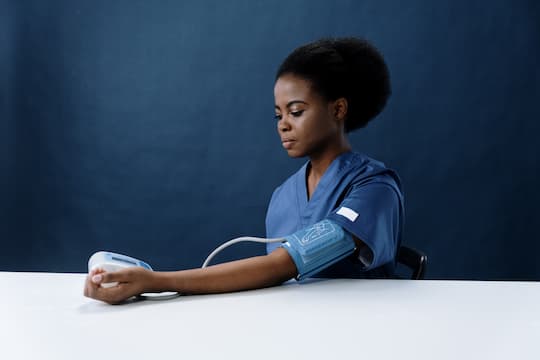A simple “prescription” for those with high blood pressure and cholesterol.
Moving more and sitting less is the best “prescription” and should be the first treatment option for lowering blood cholesterol or hypertension, according to an American Heart Association (AHA) statement.
Physical activity (referring to all movement) should be the first-line of therapy for people with mild to moderately elevated blood pressure or cholesterol.
Healthy adults should incorporate movement — including during leisure time — in their daily lifestyle to reduce heart disease risk.
High blood pressure is a common health condition, nearly 1 in 2 of American adults has hypertension and only 1 in 4 keep the condition under control.
According to the study, increasing physical activity is an excellent treatment option for the 37 percent of US adults with slightly to moderate raised cholesterol levels and 21 percent with mild to moderately raised blood pressure.
Dr Bethany Barone Gibbs, the study’s first author, said:
“The current American Heart Association guidelines for diagnosing high blood pressure and cholesterol recognize that otherwise healthy individuals with mildly or moderately elevated levels of these cardiovascular risk factors should actively attempt to reduce these risks.
The first treatment strategy for many of these patients should be healthy lifestyle changes beginning with increasing physical activity.”
Individuals at low risk of heart disease or stroke, but having a systolic (top number) blood pressure between 120-139 mm Hg and diastolic (bottom number) blood pressure between 80-89 mm Hg, or those with an LDL cholesterol level of above 70 mg/dL would meet the AHA statement on lifestyle-only treatment for high blood pressure.
Dr Gibbs said:
“Increasing physical activity can help lower blood pressure and cholesterol, along with many other health benefits.”
Increasing physical activity reduces systolic and diastolic blood pressure at least 4 mm Hg and lowers LDL (bad) cholesterol level by 6 mg/dL.
According to the physical activity guidelines, people should do at least 150 minutes of moderate intensity aerobic exercise or 75 minutes of vigorous aerobic activity plus two or more sessions of muscle strengthening exercises per week.
Although, as Dr Gibbs says :
“Every little bit of activity is better than none.
Even small initial increases of 5 to 10 minutes a day can yield health benefits.”
According to the statement ‘Exercise is Medicine’, so clinicians should provide training “prescriptions” including:
- Patients to report their physical activity by answering specific questions or using a wearable device.
- Provide patients with exercise plans and link them to health coaches or local resources to improve their physical activity.
- Encourage patients to enjoy activities and increase exercises like climbing stairs and brisk walking.
Dr Gibbs concluded:
“In our world where physical activity is increasingly engineered out of our lives and the overwhelming default is to sit — and even more so now as the nation and the world is practicing quarantine and isolation to reduce the spread of coronavirus — the message that we must be relentless in our pursuit to ‘sit less and move more’ throughout the day is more important than ever.”
The study was published in the journal Hypertension (Gibbs et al., 2021).

